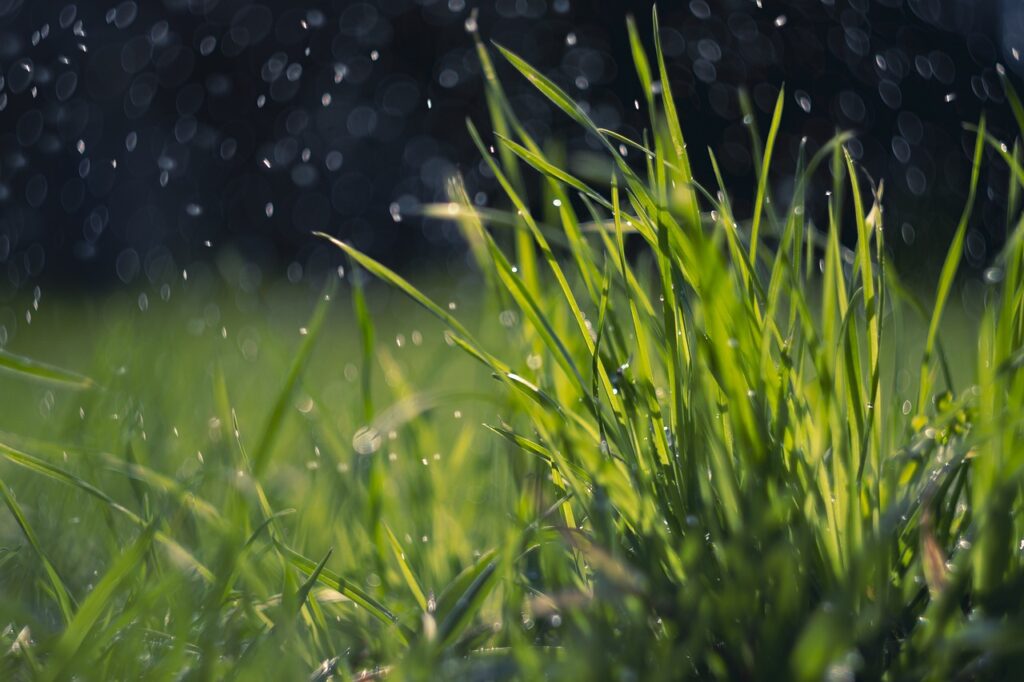
Warm-Season Lawn Tips for May
Warm-season lawns include bermudagrass, zoysiagrass, centipedegrass, and St. Augustinegrass.
- You should begin mowing regularly to a height that’s appropriate for your turf type. Mowing height can have a big impact on your turfgrass health. For the healthiest grass, mow bermudagrass and zoysiagrass to 1-2″ and St. Augustinegrass to 2-3″. For any grass type, raise your mowing height an additional half inch in hot weather, and don’t remove more than 1/3 of the grass height at one time.
- You can also begin watering now that it’s warming up. Established lawns do best with about 1″ of water per week. Rainfall also contributes to this amount, so adjust the amount you water depending on that week’s precipitation. A cheap rain gauge in your yard is an easy way to keep track of the amount of water your lawn gets from precipitation and irrigation. Water new seed or sod daily for the first 30 days to help it get established.
- Lawns should have fully greened up by May, so it’s now a safe time to begin applying your nitrogen fertilizers. Always apply fertilizer and lime based on your recent soil test results.
- Hopefully you’ve gotten a soil test and limed your warm-season lawn already, but go ahead and do it if not. Bermudagrass and St. Augustinegrass do best when soil pH is 5.5-6.5. Zoysiagrass likes the pH to be a little higher, at 6.0-7.0.
- May through July is the best time to seed or sod a new warm-season lawn.
- May through August is a good time for core aeration. Core aerating regularly is important for reducing compaction and helping your turf grow as vigorously as possible. Hold off on dethatching until next month.
- Your window for applying pre-emergent herbicides for warm-season weeds has closed, but you can continue to apply post-emergent herbicides for broadleaf weeds that have already come up. (Note: when applying post-emergents for grassy weeds, like crabgrass and dallisgrass, wait until your lawn is actively growing in June-August. This will help avoid burning your turfgrass.)
Cool-Season Lawn Tips for May
Cool-season lawns include tall fescue, fine fescue, Kentucky bluegrass, rough bluegrass, and ryegrass.
- Continue mowing and watering cool-season lawns regularly. Mow tall fescue to a height of 2-3” and never remove more than 1/3 of the total height at one time. Turf should get about 1” of water per week. Keep in mind that rainfall contributes to this amount, and adjust your irrigation as necessary.
- Hold off on dethatching and core aerating during the warm season.
- No need to fertilize cool-season lawns until early October. Cool-season lawns are dormant in the summer, so fertilizing now could cause damage. No need to lime until Fall.
- We don’t recommend seeding new lawns, interseeding established lawns, or laying sod until Fall.
- Your window for applying pre-emergent herbicides for warm-season weeds has closed, but you can continue to apply post-emergent herbicides for broadleaf weeds that have already come up.
If you have questions about your lawn, don’t hesitate to contact us at one of our offices.
Learn More
Bermudagrass Lawn Calendar
Zoysiagrass Lawn Calendar
Centipedegrass Lawn Calendar
St. Augustinegrass Lawn Calendar
Tall Fescue Lawn Calendar